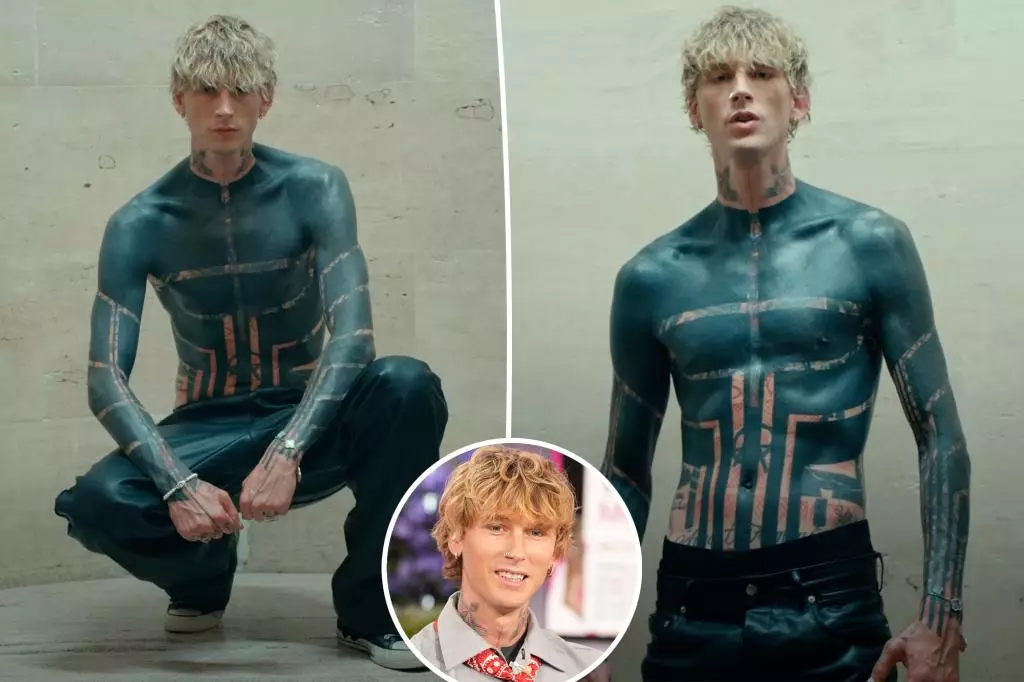Machine Gun Kelly (MGK) has long been celebrated for his rebellious spirit and artistic expression, but his latest venture into body modification pushes the boundaries even further. His decision to undertake a massive blackout tattoo across his torso and arms signifies more than just an aesthetic choice; it embodies a fearless attitude towards self-reinvention and a desire to challenge conventional notions of beauty and pain. MGK’s willingness to endure intense discomfort demonstrates an attitude of resilience that many fail to understand. His body, once a canvas covered in smaller tattoos, now stands as a monumental testament to his personal evolution, reflecting not only his artistic vision but also his internal battles.
The Pain as a Form of Personal catharsis
The artist openly describes the process as his “worst torture,” revealing the raw intensity of his experience. Eschewing anesthesia or numbing agents, MGK indicates a commitment to confronting pain head-on—a symbolic act of facing inner struggles with physical sacrifice. For many, pain is something to avoid, but for MGK, it becomes a vehicle for catharsis and self-discovery. His approach underscores a broader philosophy: transformation often entails discomfort. The tattoo process, especially such an extensive blackout piece, mirrors the emotional and mental layers MGK has traversed. Every line etched onto his skin becomes a physical manifestation of resilience, a reminder that some growth requires enduring hardship.
Art as a Reflection of Personal History and Family Bonds
Despite the dramatic overhaul of his body, MGK preserves personal souvenirs of his past. His daughter Casie’s childhood tattoo peeks through the black ink, symbolizing the importance of family amid his tumultuous journey. These remnants serve as anchors, grounding him in his roots even as he redefines himself through radical body art. His connection to his children, from his 16-year-old daughter to his newborn Saga Blade, illuminates the layered significance behind his decision. His tattoos are not merely aesthetic statements—they are intertwined with his identity, love, and the ongoing process of healing.
Why Boldness Matters in Modern Self-Expression
MGK’s transformation pushes the envelope of what society perceives as acceptable body image. In a culture often obsessed with perfection, his radical blackout tattoo challenges viewers to consider the power of embracing imperfections and pain as integral parts of self-acceptance. The act of continuously reinventing oneself—whether through piercing, tattooing, or other forms—serves as a form of rebellion against societal norms. For MGK, it is a declaration: true strength lies in vulnerability, in revealing raw, unfiltered truth through one’s body. His inked-up appearance becomes a visual narrative of overcoming inner darkness, turning pain into a statement of resilience and authenticity.
This body modification journey doesn’t just alter MGK’s exterior; it signifies his refusal to be confined by traditional expectations. His willingness to endure pain, honor his past, and boldly redefine himself showcases a profound message: empowerment often comes from radical acts of self-love and resilience. Through his daring choice, MGK demonstrates that transformation, while painful, can be incredibly empowering—creating a new identity that is both authentic and unapologetically bold.

